CHM collections volunteer Robert Blythe writes about photographer Ron Gordon’s background and approach to capturing images.
“Photography is about your own life. The story that you ultimately tell with a camera is your own story.” This is Ron Gordon’s take on his passion: photography. His images tell his story as well as a host of compelling Chicago ones, and several thousand of them are now available for research access.
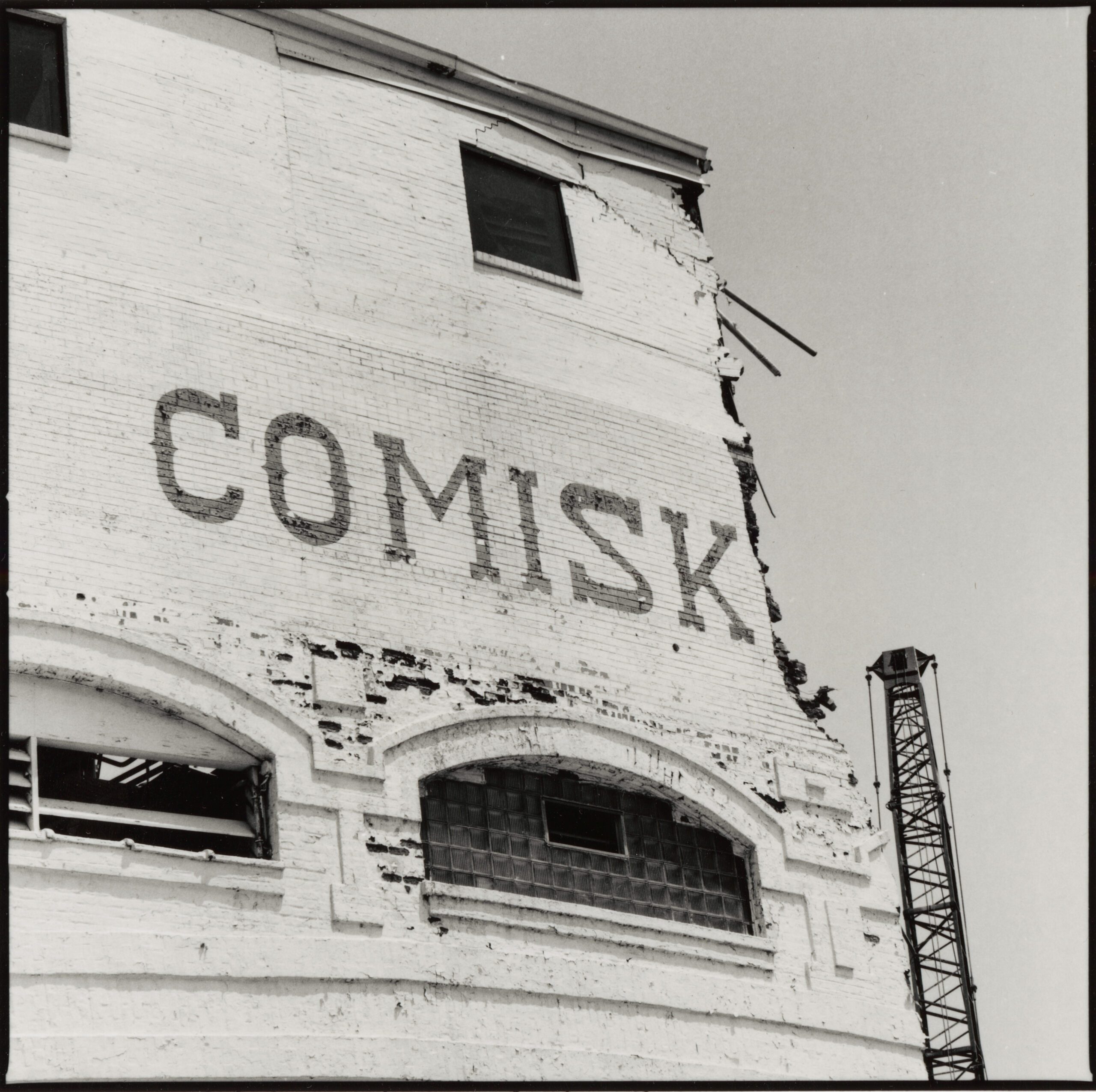
Comiskey Park under demolition, 1991. CHM, ICHi-174017. All photographs by Ron Gordon
Growing up in a working-class neighborhood on Chicago’s Southeast Side, Gordon decided against working in a steel mill or joining the military, which were common career paths for his peers. Instead, he studied literature and French at the University of Illinois at Urbana-Champaign. While in graduate school there, Gordon joined a cinema society and became interested in film and photography. As he puts it, “When I discovered the darkroom everything just came together for me. It combined mechanics, chemistry, aesthetics, and storytelling.”
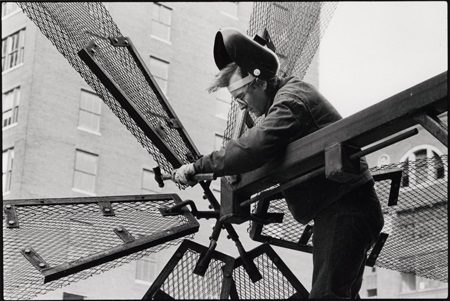
An artist hammers away at his sculpture during the 1984 Sculpture Chicago, where ten artists were commissioned to build outdoor pieces in Printers Row. CHM, ICHi-174019
Upon returning to Chicago, Gordon began photographing buildings designed by his architect brother. Then, in June 1974, he was driving around the city and came upon the 12th Street Depot of the Illinois Central Railroad as it was being torn down. Gordon pulled out his Crown Graphic camera and began shooting. Thus began four decades of documenting the city’s built environment, particularly those buildings—famous and not so famous—that were falling to the wrecking ball.
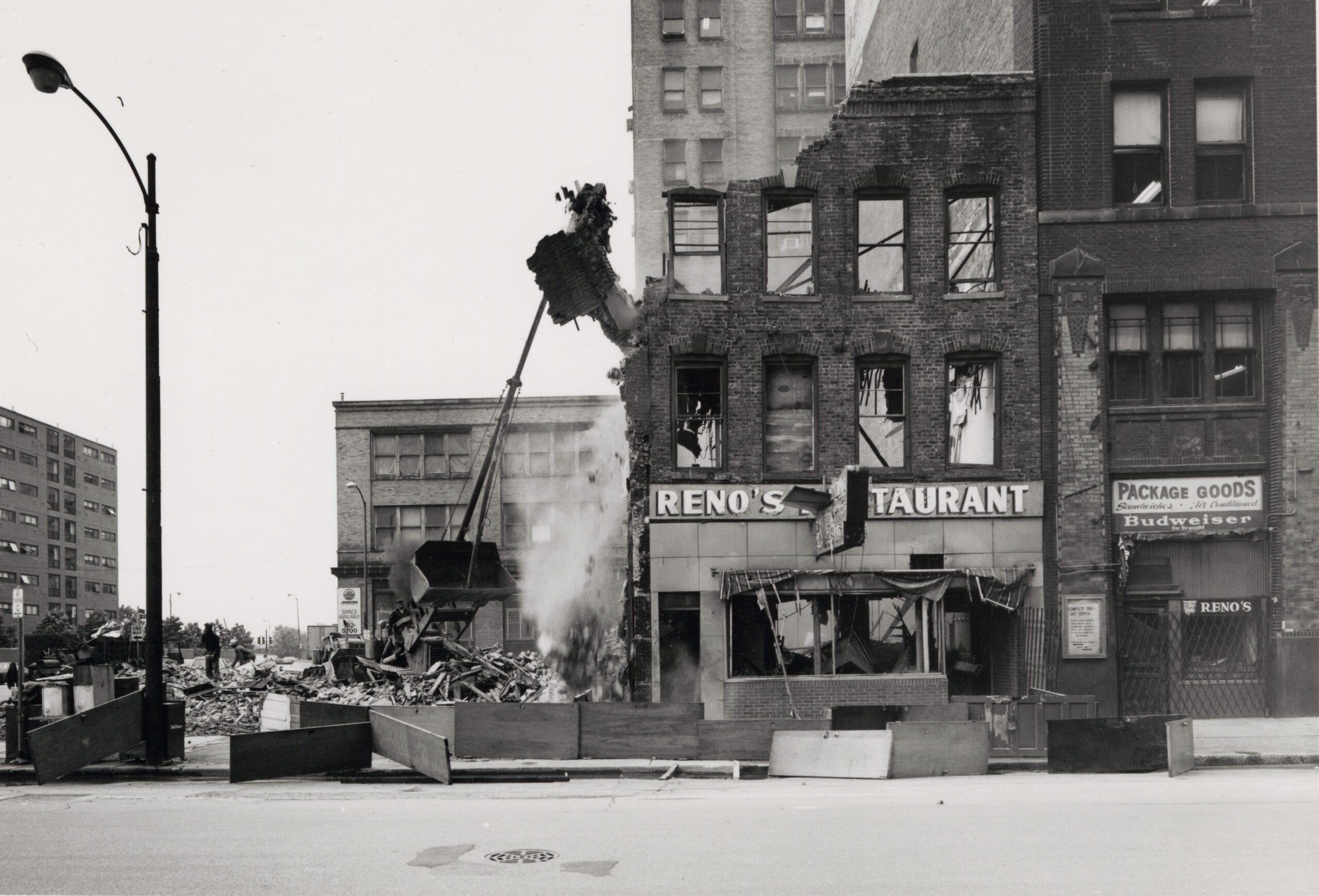
With the demolition of the C&A Tap complete, Reno’s Restaurant is the next to face the wrecking ball, 1979. CHM, ICHi-174006
Gordon opened a studio in Printer’s Row in 1977, printing his own work and that of other photographers. In his sixteen years at that location, he recorded the changes as the last typesetters and job printers moved out of the area and loft residents and upscale restaurants moved in. From 1992 to 2016, he had his studio in Pilsen, another venerable and changing Chicago neighborhood that he frequently photographed, and as of 2017, he runs his photography business from Durham, North Carolina. Always fascinated by equipment and mechanics, Gordon has used many kinds of cameras: large-format Hasselblads and Deardorffs, 35-millimeter Nikons, and panoramic cameras.
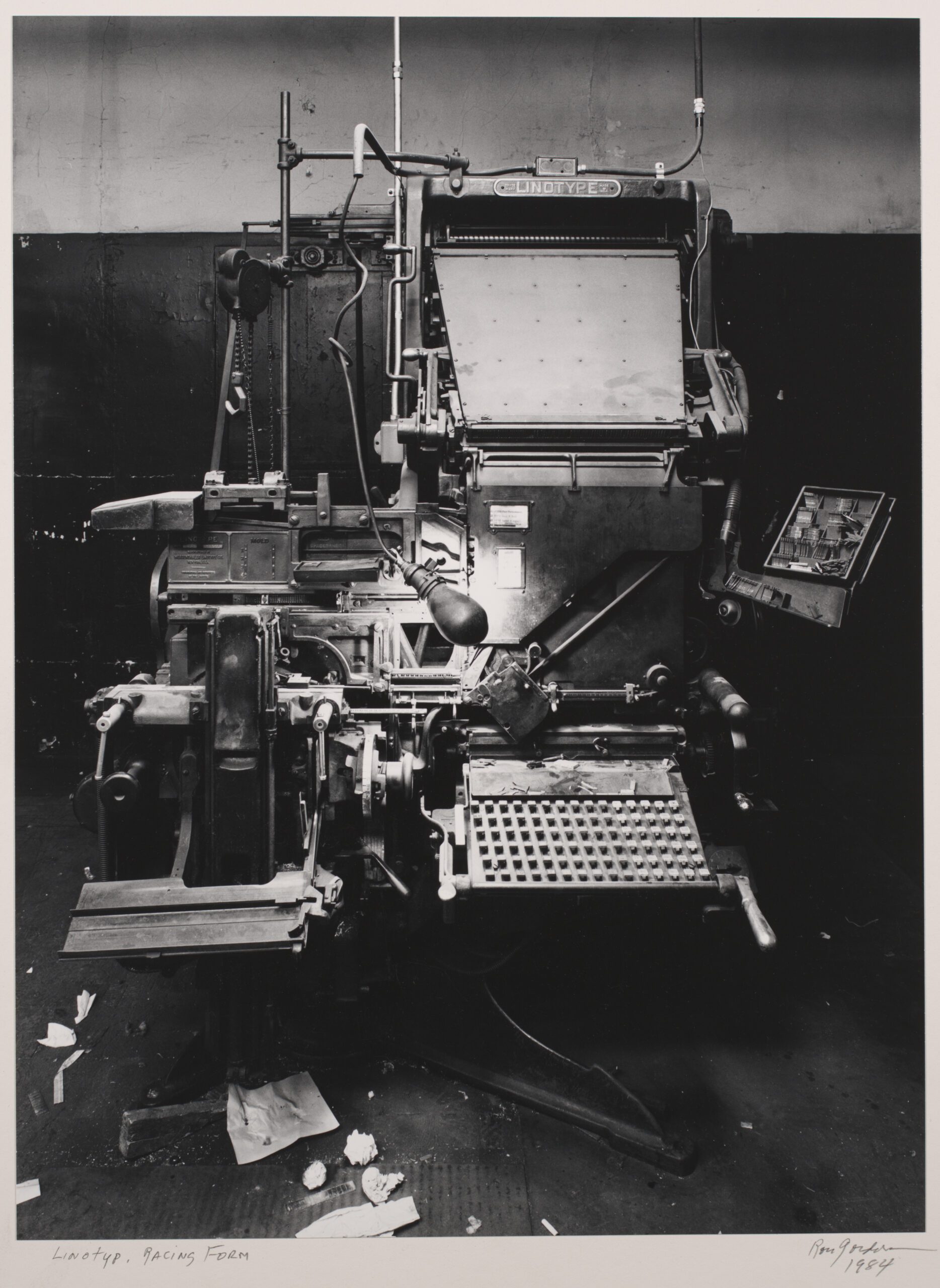
Linotype machines such as this one were used to set type for printed materials from the late nineteenth century to the 1980s. Chicago, 1984. CHM, ICHi-174021
During his forty years in Chicago, Gordon pursued his own interests while also photographing architects’ projects and illustrating stories in The Chicago Reader and Travesias. Many institutions mounted exhibitions of Ron’s work, among them Chicago’s Museum of Contemporary Photography, the Hyde Park Art Center, Prospectus Gallery, and Galerie Minaca in Paris. Books of his work include Forgotten Chicago (Arcadia, 2004) and Printer’s Row, Chicago (Arcadia, 2003).
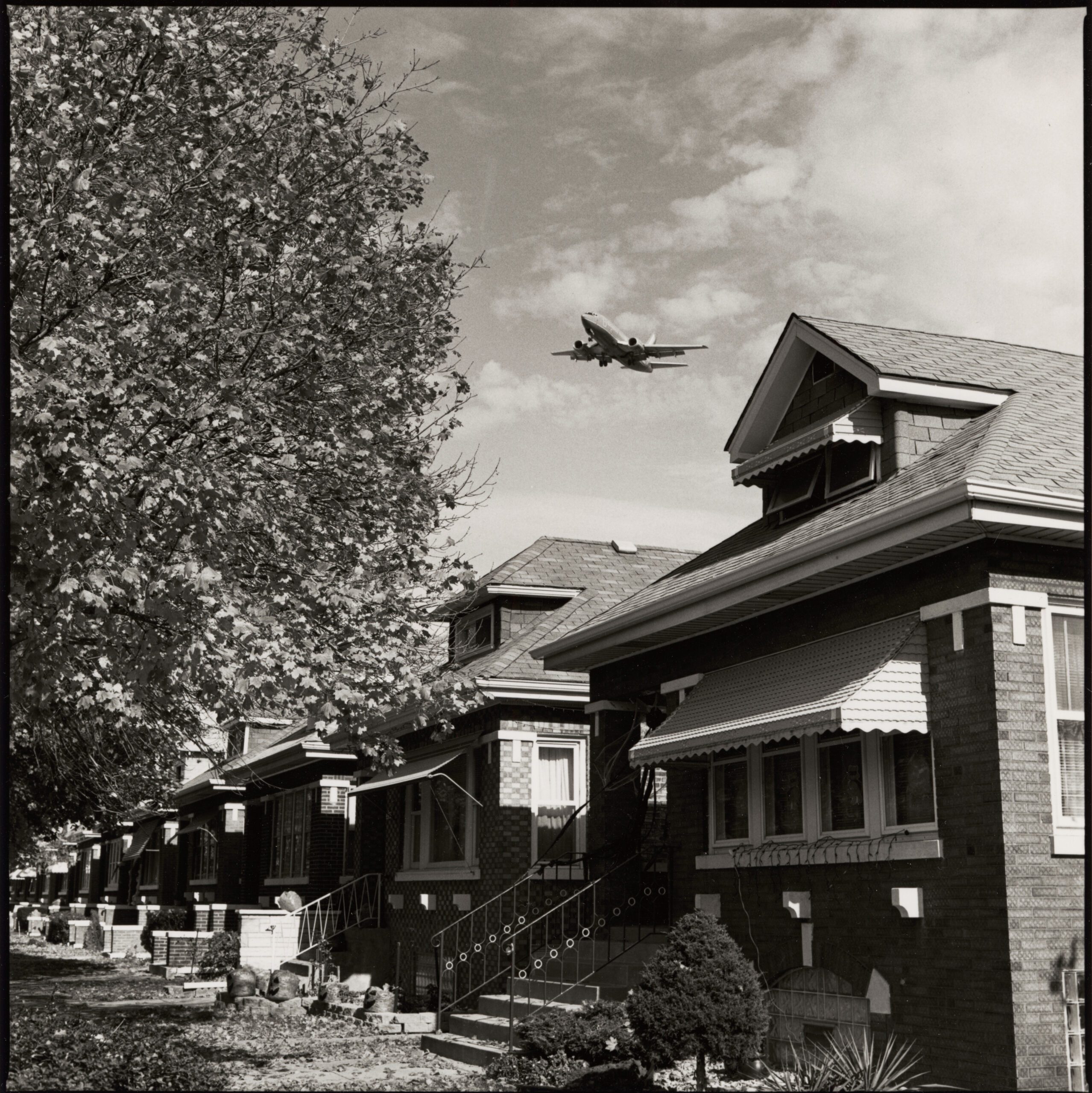
An undated photograph of an airplane flying over Chicago bungalows. CHM, ICHi-174009
In addition to the many shots of Chicago buildings and neighborhoods, the Ron Gordon Visual Materials collection includes images of baseball games, players, and fans at Comiskey Park; jet airplanes flying low over Chicago’s Southwest Side; outdoor sculpture from Sculpture Chicago (an annual event in the 1980s); the last days of the Maxwell Street market; and portraits from the streets of Chicago. Dozens of the city’s stories come to life this collection, all embodying the vision of Ron Gordon, a master storyteller.
- Peruse the Ron Gordon Visual Materials finding aid